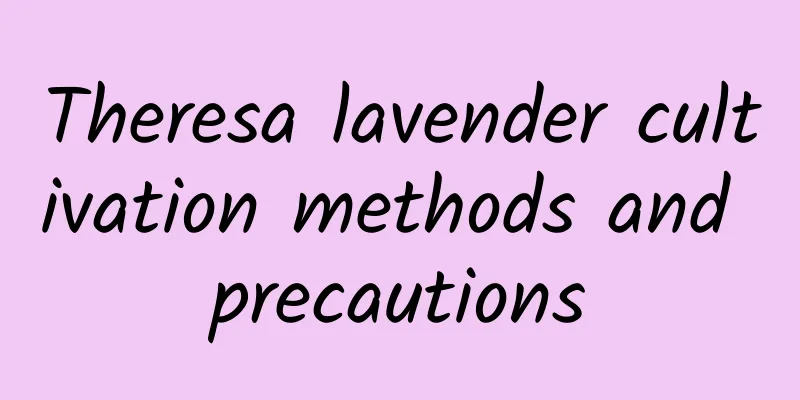Theresa lavender cultivation methods and precautions

|
Theresa lavender is a relatively easy-to-grow flower. It is native to South Africa and prefers light. It does not have too many requirements for the soil in which it grows. It is more suitable for growing in medium to large ornamental potted plants. Its leaves are relatively ordinary, but they will be more ornamental if properly maintained. Theresa lavender cultivation method1. Pot soil Theresa lavender does not require too complicated soil. If you find it troublesome, you can directly dig some garden soil from the vegetable garden to meet its growth needs. Or you can mix it with some coarse coconut coir, perlite or coarse sand, accounting for about 20%~30% is enough. 2. Lighting Theresa lavender must grow in an environment with plenty of sunlight, ensuring at least 6 to 8 hours of direct sunlight a day. It is best to grow it in a full-sun environment, unless the temperature reaches above 40 degrees, in which case appropriate shading is needed. At other times, more sunlight should be given. 3. Fertilization When fertilizing Theresa lavender, you must pay attention to applying thin fertilizers frequently. If you have time, it is best to add water-soluble fertilizers once every week. It is best to adjust the concentration to about 1000 to 1500 times. 4. Watering The watering of Theresa lavender also depends on the maintenance environment. If there is sufficient light, it should be watered thoroughly once a day. If it is full sunlight, it may even need to be watered once in the morning and evening. Theresa lavender care precautions1. Planting new seedlings For the newly bought potted Theresa lavender seedlings, we don't need to rush to change the pot. We can first place it in a ventilated and shaded place for maintenance, give it some soft scattered light, and ensure that the air humidity is above 50%. 2. Note when changing pots Before repotting Theresa lavender, remember to check whether the plant has diseased spots and the dryness and wetness of the potting soil. Then, cut off the diseased leaves and roots according to the situation, and keep the soil in a relatively dry state, so that it can recover quickly after repotting. |
<<: Breeding methods and precautions for blue butterflies
>>: Cultivation methods and precautions of green radish potted plants
Recommend
How to identify Magnolia arborescens
1. Blades Magnolia is a small tree, about 6-10 me...
How to propagate June Snow
Scattering method Use the open space to loosen th...
The role and efficacy of Malus truncatum
The role of Malus truncatum As a common ornamenta...
What is Perilla and what are its functions?
1. What is 1. Family: Perilla is a plant of the L...
Is it easy for daffodils to survive in winter?
Are plants easy to keep alive in winter? To answe...
Planting technology and cultivation management of Asparagus cochinchinensis
Asparagus cochinchinensis may be an unfamiliar na...
How to propagate apricot trees by grafting
Apricot tree grafting propagation method The firs...
How to manage Dieffenbachia in winter
Winter care of Dieffenbachia: timely repotting Ge...
Time and method of pinching grapes in winter
During the grape planting process, it is necessar...
How to cultivate Bauhinia
1. Maintenance methods 1. Temperature: Bauhinia h...
Cultivation methods and precautions of Christmas cactus
1. Water During its vigorous growth stage, Christ...
What fertilizer is best for green radish
1. Fertilizer Chlorophytum is a foliage plant wit...
The growth environment and local conditions of the sycamore tree
The growth environment and conditions of the syca...
How to manage strawberries in winter?
The temperature is low in winter, which is a big ...
What are the effects of Astragalus and how to take it
1. Efficacy 1. Strengthen physical fitness: The r...









